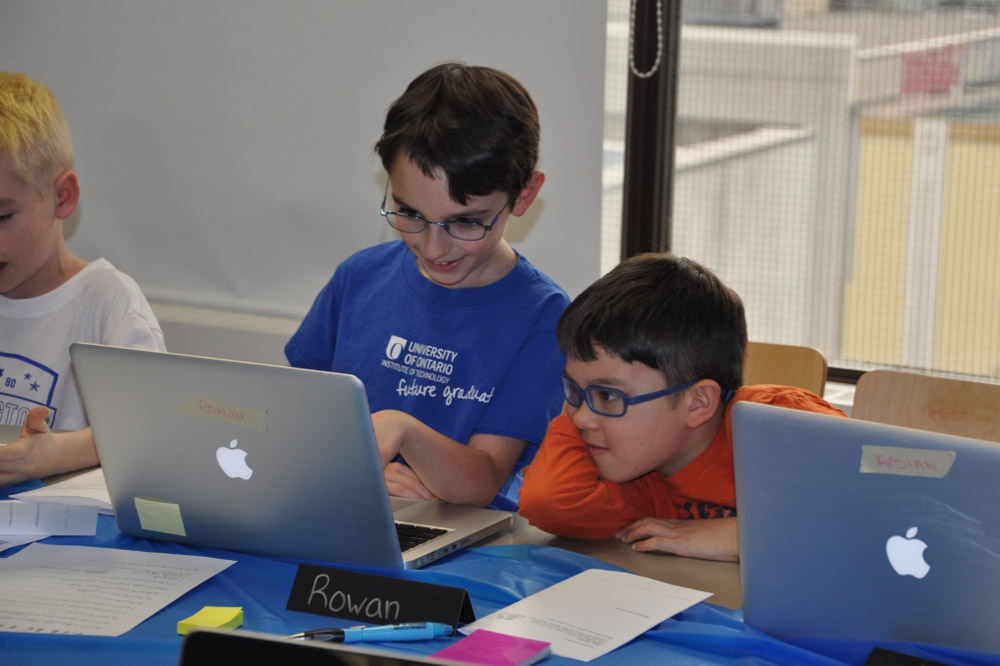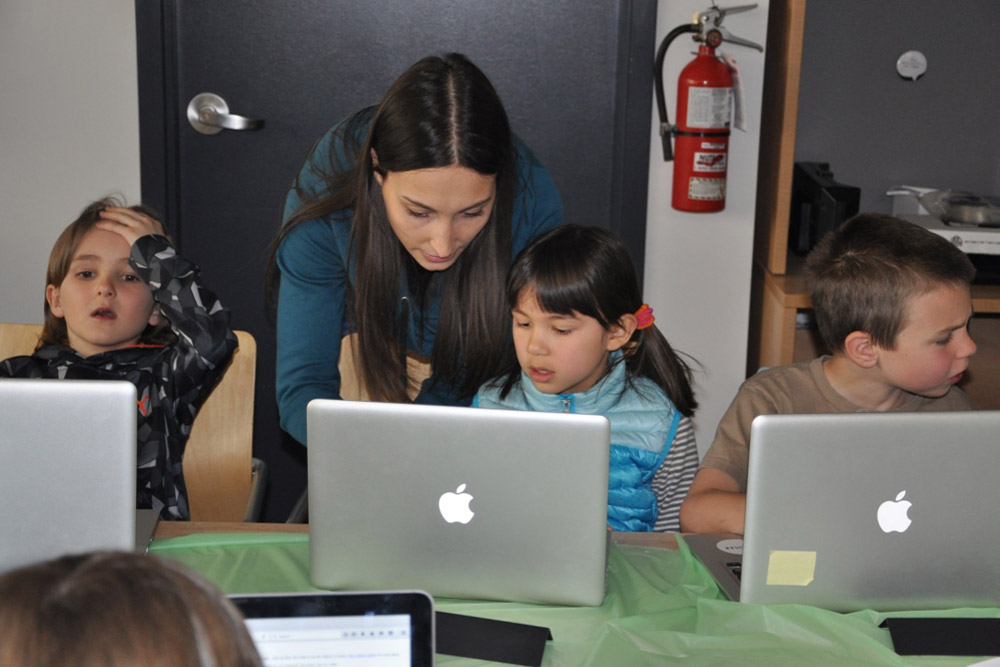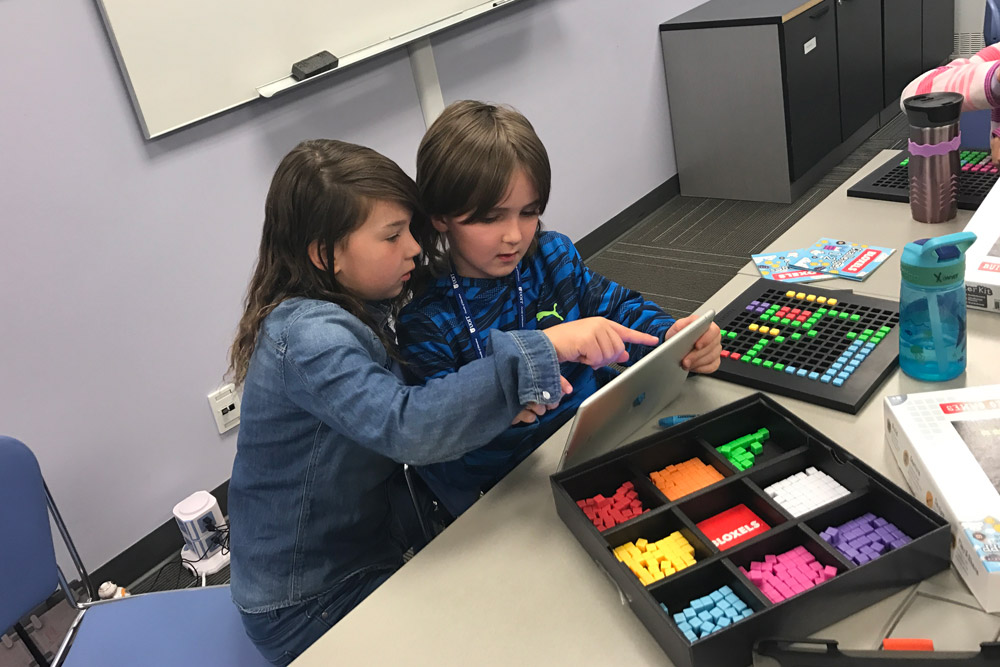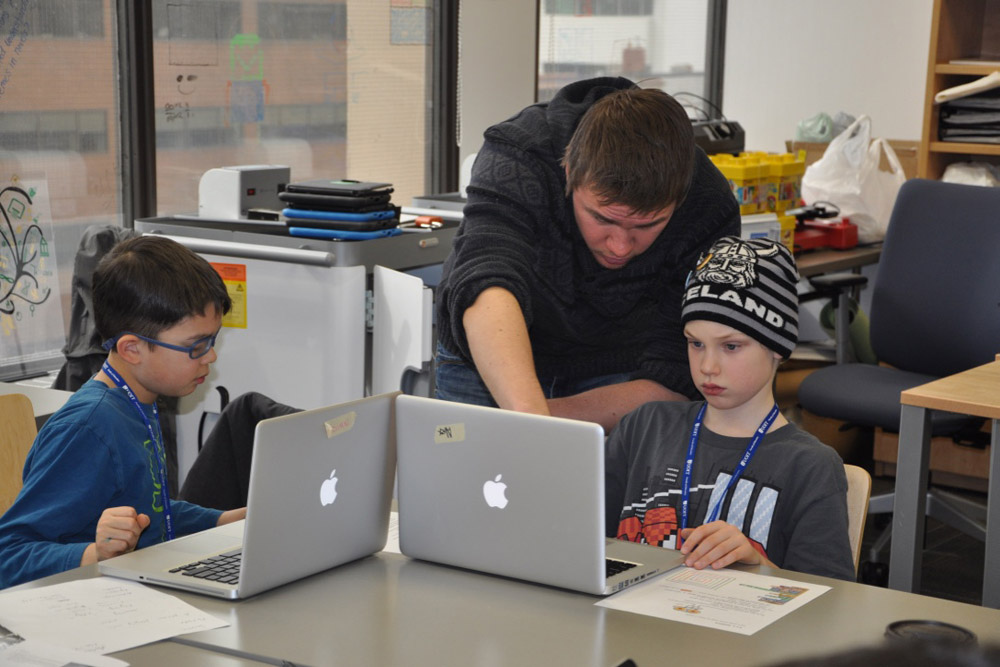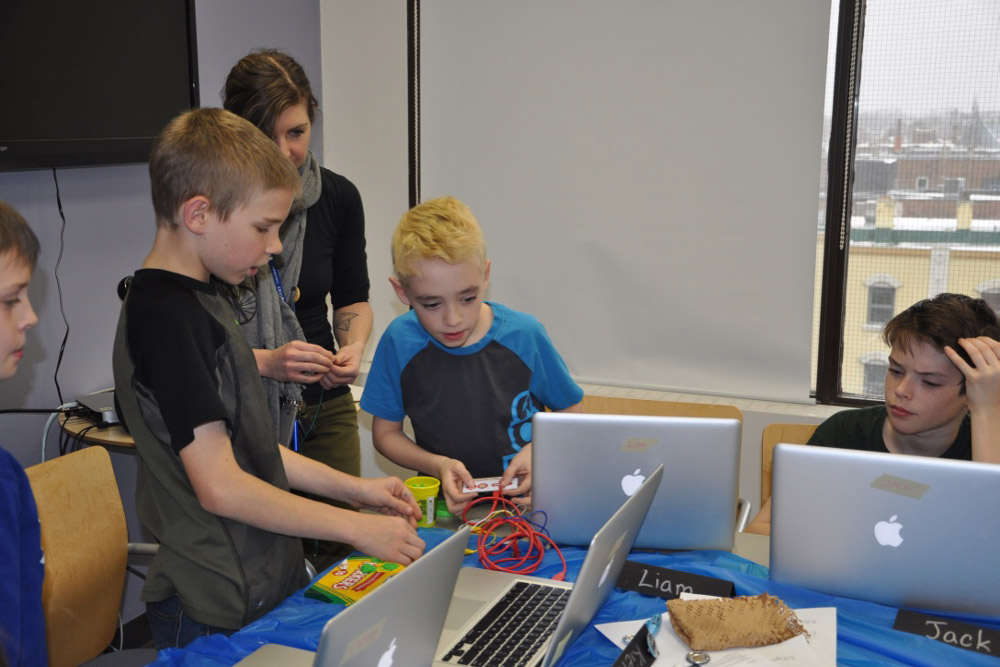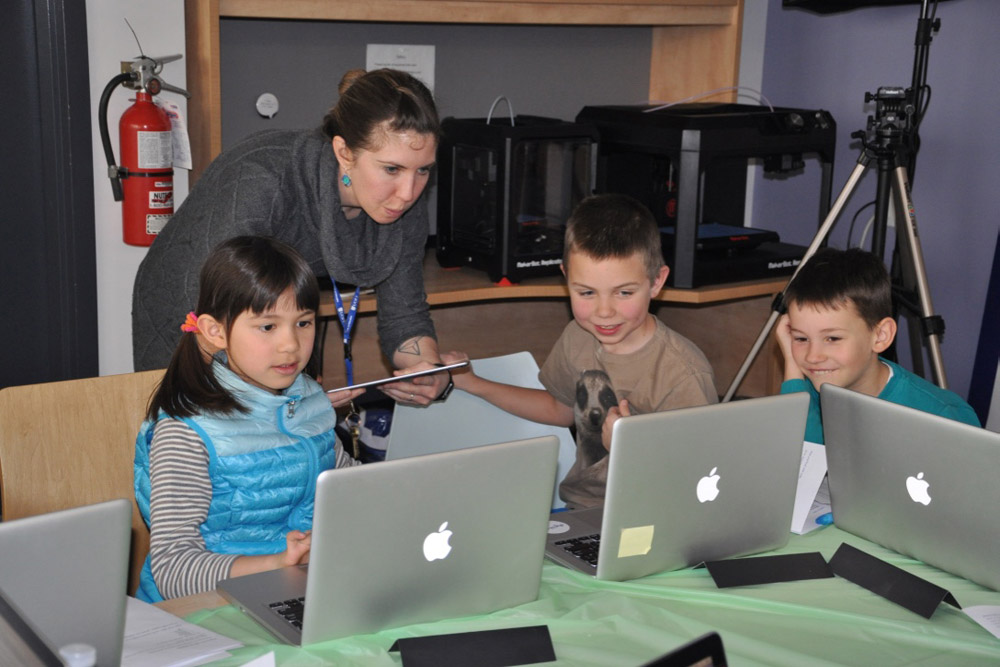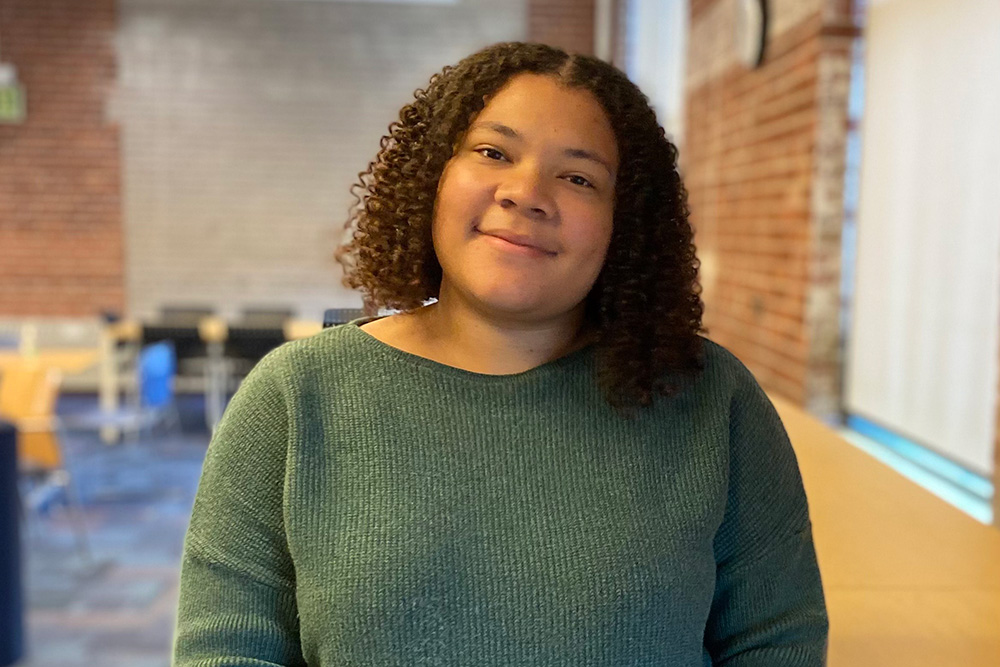Investigating, making and sharing at March Break Maker Camp
Kids explore UOIT Faculty of Education’s STEAM-3D Maker Lab to learn how technology and the arts intersect
April 11, 2017
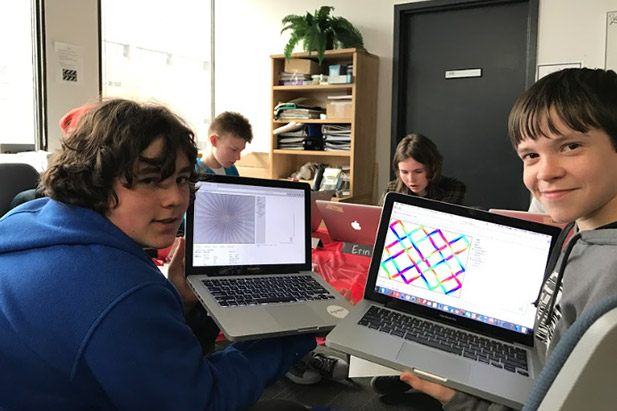
The advancement of technology continues to change our culture in profound ways. Computers and smartphones are now common in most households, and technology captivates children at a very young age.
Smartphones, touchpads and laptops may serve as a source of entertainment, but they’ve also become useful teaching tools. Recognizing the grasp today’s children have on technology, the University of Ontario Institute of Technology’s Faculty of Education (FEd) offers the March Break Maker Camp: a program that blends science, technology, engineering, the arts and mathematics (STEAM) to teach creativity, innovation, art and design.
FEd has hosted the Maker Camp at its STEAM 3D Maker Lab since 2014. This year, 27 students between the ages of seven and 12 used a variety of technological tools to create and design their own stories or projects.
“The camp started off with students being shown an array of programs and technologies centring on STEAM concepts,” said Dr. Janette Hughes, Canada Research Chair in Technology and Pedagogy, who heads up the STEAM 3D Maker Lab.
The camp was split into two sessions. The morning sessions included math, coding and art activities that gave students a chance to learn how to code and create their own math and art animations. The Fields Institute for Research in Mathematical Sciences sponsored the morning’s activities. Afternoons focused on literacy and the arts. Students learned how to use makerspace tools and e-textiles to enhance the creative and inventive learning experience. Laura Morrison, FEd Research Associate and Sessional Lecturer led the event, facilitated by a team of teacher candidates and graduate students at the university.
“The students are here to learn about themselves, and engage in authentic and meaningful learning activities,” said Dr. Hughes. “In addition to gaining experience with current technologies, their camp experiences prepare them to be adaptable to inevitable future changes in technology.”
Learning tools included:
- Arduino Lilypads/Floras – round, sewable electronic modules for creating wearable technology
- Bee-Bot/Blue-Bot – Bluetooth-connected robot kids can program from a tablet or PC
- Bloxels - hands-on platform for kids to build, collaborate and tell stories through video game creation
- Sketchup –3D-drawing app
- Green Screen rooms, which enable you to superimpose your subjects onto virtual backgrounds
- Makey Makey invention kits
- Scratch Jr coding program for kids aged five to seven
- Sphero app-enabled robotic balls
At the end of the camp, students displayed their accomplishments and creations in a gallery walk for family members to see.
6 > 1